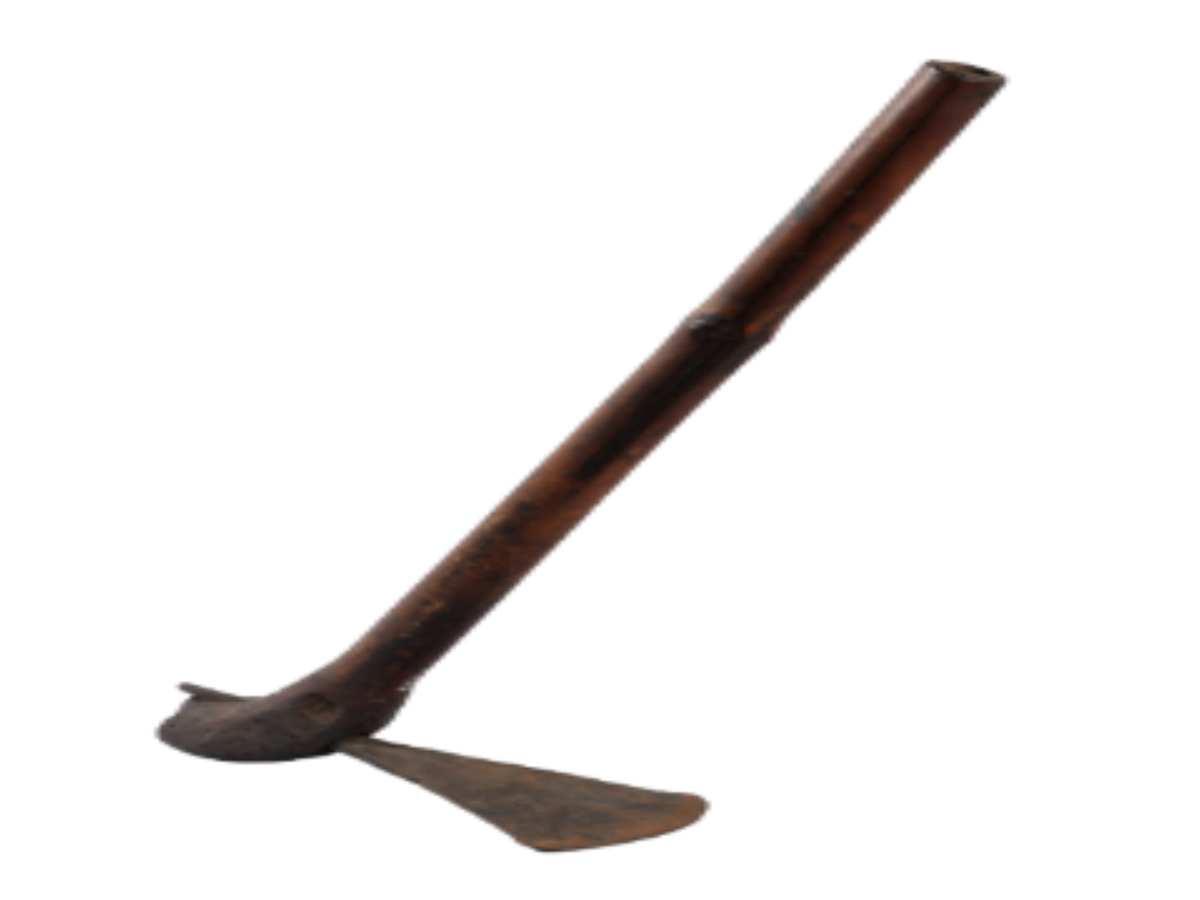State
Tribe Name
short description
The Ao-Naga tribe, a main section of the Naga tribes of Nagaland, has extensive cultural traditions, traditional knowledge systems, and indigenous agricultural tools within its heritage. Among the various tools, perhaps the hoe finds its utmost place in this tribe's agrarian lifestyle. The hoe, which is mostly used by this community, is a simple one but with great time efficiency-the ingenuity of the people and their intimate knowledge of land. The Ao-Naga hoe has a triangular iron blade designed with a concave cutting edge that allows the user to effectively dig and till the soil. The blade is slotted into the strong yet lightweight bamboo handle, which is very suitable for the long hours of work that the fields require.
Thumbnail

Filter Postion
Left
Filter Background
Off
Theme
Filter Header Image

content
Image

description
The Ao-Naga tribe, a main section of the Naga tribes of Nagaland, has extensive cultural traditions, traditional knowledge systems, and indigenous agricultural tools within its heritage. Among the various tools, perhaps the hoe finds its utmost place in this tribe's agrarian lifestyle. The hoe, which is mostly used by this community, is a simple one but with great time efficiency-the ingenuity of the people and their intimate knowledge of land. The Ao-Naga hoe has a triangular iron blade designed with a concave cutting edge that allows the user to effectively dig and till the soil. The blade is slotted into the strong yet lightweight bamboo handle, which is very suitable for the long hours of work that the fields require.
The angle of the blade attachment with the handle forms such an acute angle that allows efficient digging with less strain. The angle gives good control on planting and depth during its operation especially on hilly terrains, which is where this jhum or shifting cultivation is widely practiced in Nagaland. The very traditional tool symbolizes the indigenous technology and sustainable practices of the Ao-Naga people. Their implements are generally handcrafted using locally available materials, signifying a strong bond between their environmental surroundings and sustainable agriculture. Tools like these also signify the spirit of community, as blacksmiths and farmers work together in making and maintaining these tools.
The angle of the blade attachment with the handle forms such an acute angle that allows efficient digging with less strain. The angle gives good control on planting and depth during its operation especially on hilly terrains, which is where this jhum or shifting cultivation is widely practiced in Nagaland. The very traditional tool symbolizes the indigenous technology and sustainable practices of the Ao-Naga people. Their implements are generally handcrafted using locally available materials, signifying a strong bond between their environmental surroundings and sustainable agriculture. Tools like these also signify the spirit of community, as blacksmiths and farmers work together in making and maintaining these tools.
Image Mode
landscape
promoted
On
Verified
Off
